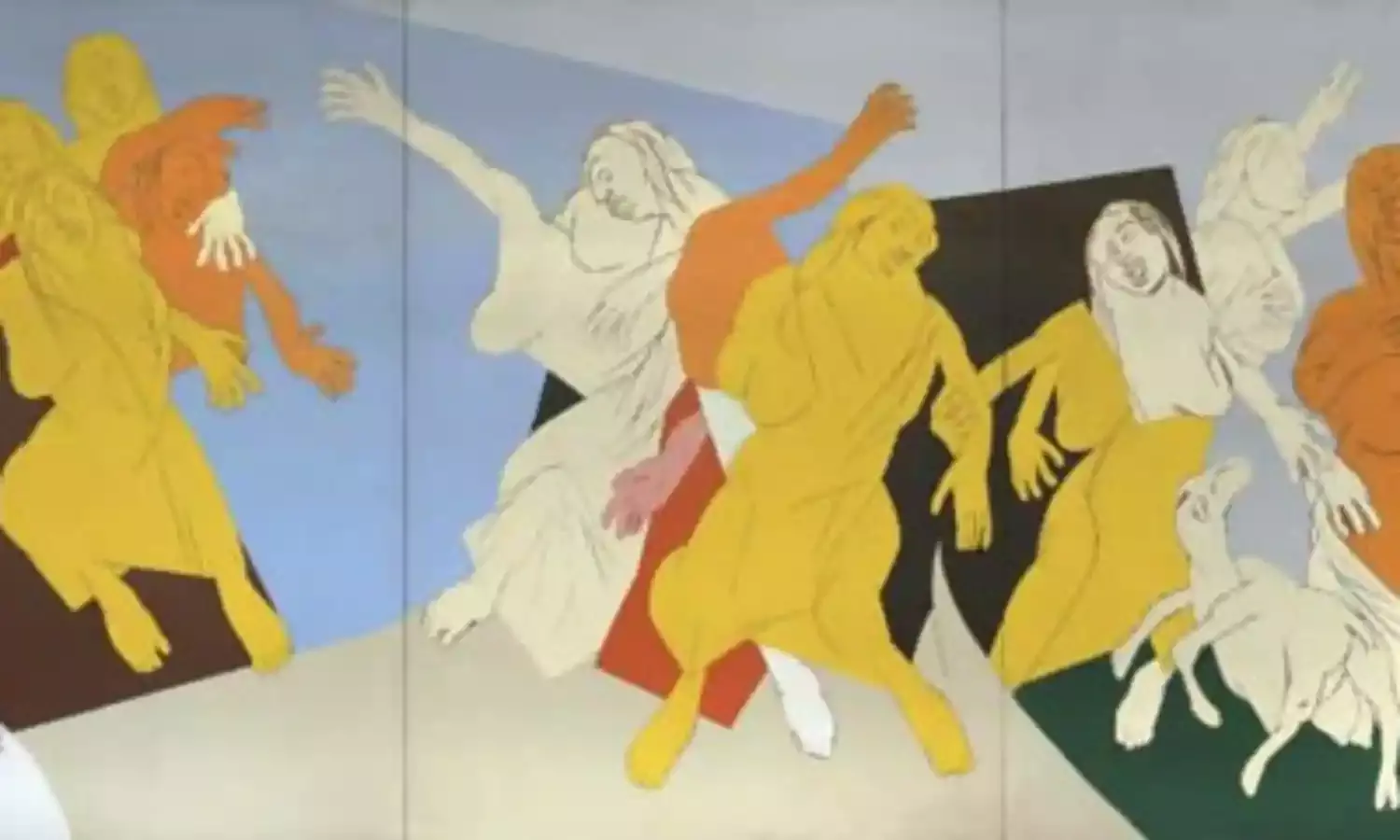Decoding The ‘Contemporary’ In Contemporary Indian Art
Contemporary art and the capital market;

NEW DELHI: Post-independence India’s contemporary art occupies a crucial role in the culture industry, wherein the arts’ market has seen its fair share of ups-and-downs. After the booming emergence of the National Capital Region in the 80s-90s, contemporary arts found a strong (inter)national buyer-base in the 2000s. Several paintings sold at high prices. Later, in 2008, we saw a collapse in the market.
The boom prompted interest from those who were looking for avenues to invest financially and find lucrative outcomes in this crucial culture market. The artists too began to increase in number. Delhi and Mumbai served as platforms to aggrandise the arts. A number of galleries and auction houses mushroomed in order to target this unorganised sector. The idea was to benefit its artisans and collectors. In the process, the very definition of the ‘contemporary’ in the arts found its essence intertwined with the capital market.
A dire need arose within the art industry to understand their current involvement as intellectuals, patrons, and connoisseurs of the arts. Delhi’s well-known art dealers claim that the only way the contemporary genre can be understood is by looking at what sells or at what is being sold.
The market is essentially the only tool for the art-historians to grasp this moment of impact of our socio-political and economical climate. Au Contraire, many art-historians claim that the contemporary genre is reflective of the modernist movement that took an effective shape post-independence. Therefore, this moment is a continuation of the modernist phase that gave birth to the Indian art market.
The art market was derived to aid the artists’ journey. Perhaps, these claims intend to emphasise on the Indian art market that is no longer restricted to the royal patrons for portraiture. Instead, industrialists, business tycoons, power-position holders of the multinational companies, political leaders, and other moneyed gentry are being viewed as the new generation of patrons, where art is categorised in two kinds: the abstract and the figurative.
Also,one may want to keep in mind that during the royal patron period the artisans were exploring other genres too, but were not easily viewable. This led the arts to occupy a central role in the culture industry as a practice of pleasure amongst the elites. Even today, the arts belong to the socially and economically privileged.
The intertwining of the arts with that of the capital culture has effectively raised a consciousness amongst the artists. They’re collectively conscious of their role in society and have been actively drawing our attention to the biases based on gender, caste, religion, class, and sexuality. To them, these practices of prejudices are intrinsically woven in our cultural fabric and, hence, pertinent to everyday living. Most artists in the capital belong to minority communities or are women.
They are efficiently carving out a space to emphasise on the social disparities that are central to our socio-political code. The left-liberal intelligentsia of our community may want to reconcile to the idea that the urban artists’ voices are also a thoughtful number to the outcry against the current governance.
Young and uprising curators, such as Premjish Achari and Shaunak Mahbubani, are setting trends otherwise.Their engagement with the arts is reformative. The capital market doesn’t stand in their way of proclaiming the arts as a platform to voice, where conversations taken from the streets and rural areas are being inculcated in their projects.
Budding artists from all spheres of artistry find themselves at par with each other and are being welcomed under this umbrella of the anti-capitalist art segment. Not to forget that these curators are funded by organised programmes, which may be an added advantage to promote the arts in their favoured ways.
Whether this moment of uprising and re-visualising the art space will cater to a future where art will require no formal training or capital investment is questionable. To be able to answer that, we need to be patient and, of course, supportive of the upcoming generation. Organisations, such as Khoj (1997) and Gati (2007), are busy in creating like-minded groups that are not only critical in its engagement, but also working towards a progressive front.
Interestingly, it can be inferred that there are organisations aiming to restructure the unorganised sector. The term ‘contemporary’ in the arts is largely revolving around the monetary factor, either to break out of it or to be confounded in the gallery space or auction houses.
The breaking out is equally expensive because the artists are no longer passive. Their demands and aspirations are at display. To them, the money is no longer a reward. It is a form of appreciation and their right to survival in a thriving economy. Gone are the days of the lowbrows and the highbrows, when the art-critics and art-historians could decide the longevity and depth of ‘the viewed’.
Today, we are at the brink of a cultural inclination towards aggressive power-plays and financial games.
(Cover Photo: Tyeb Mehta - Celebration. Credit: CHRISTIE’S)

